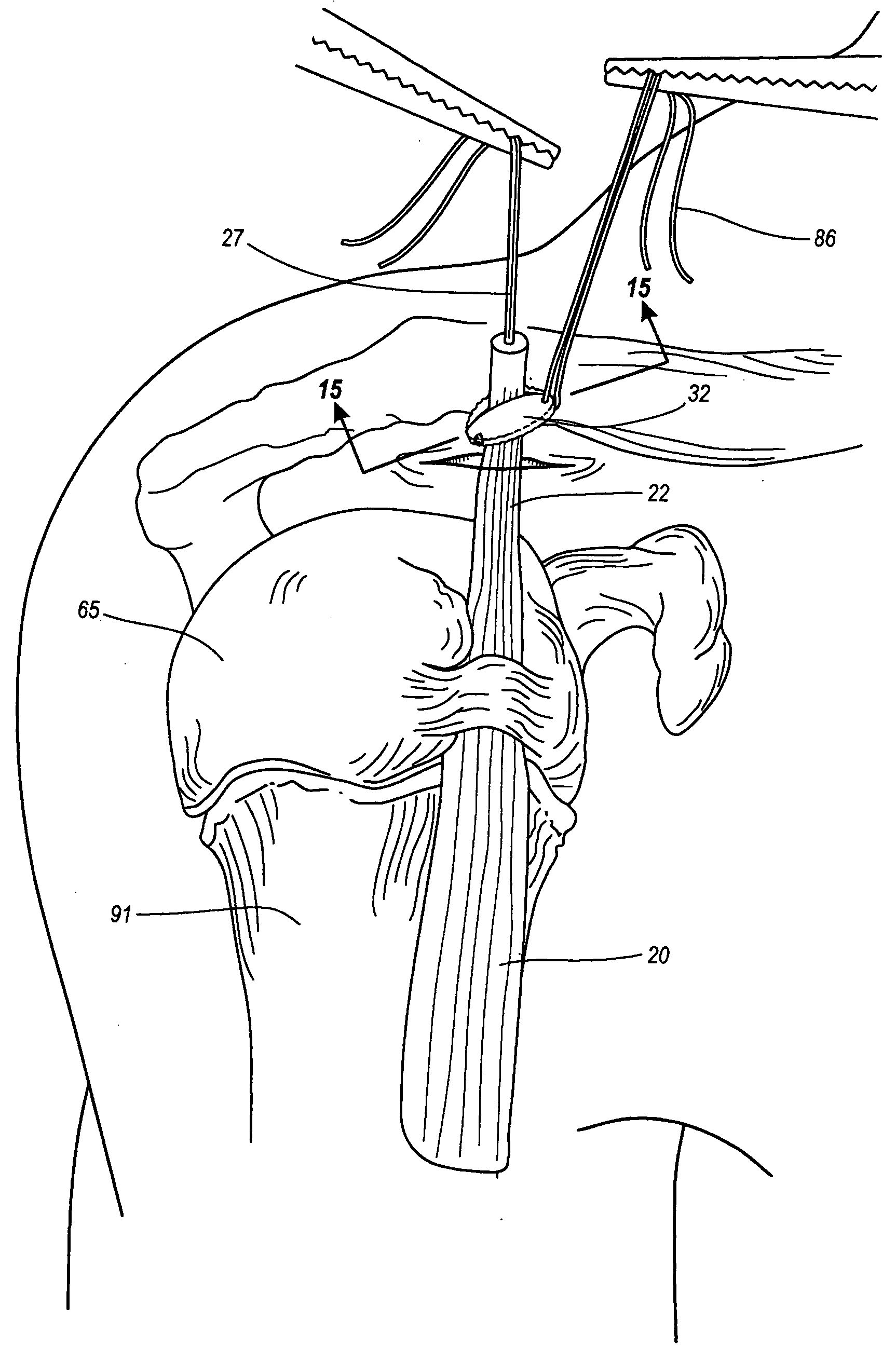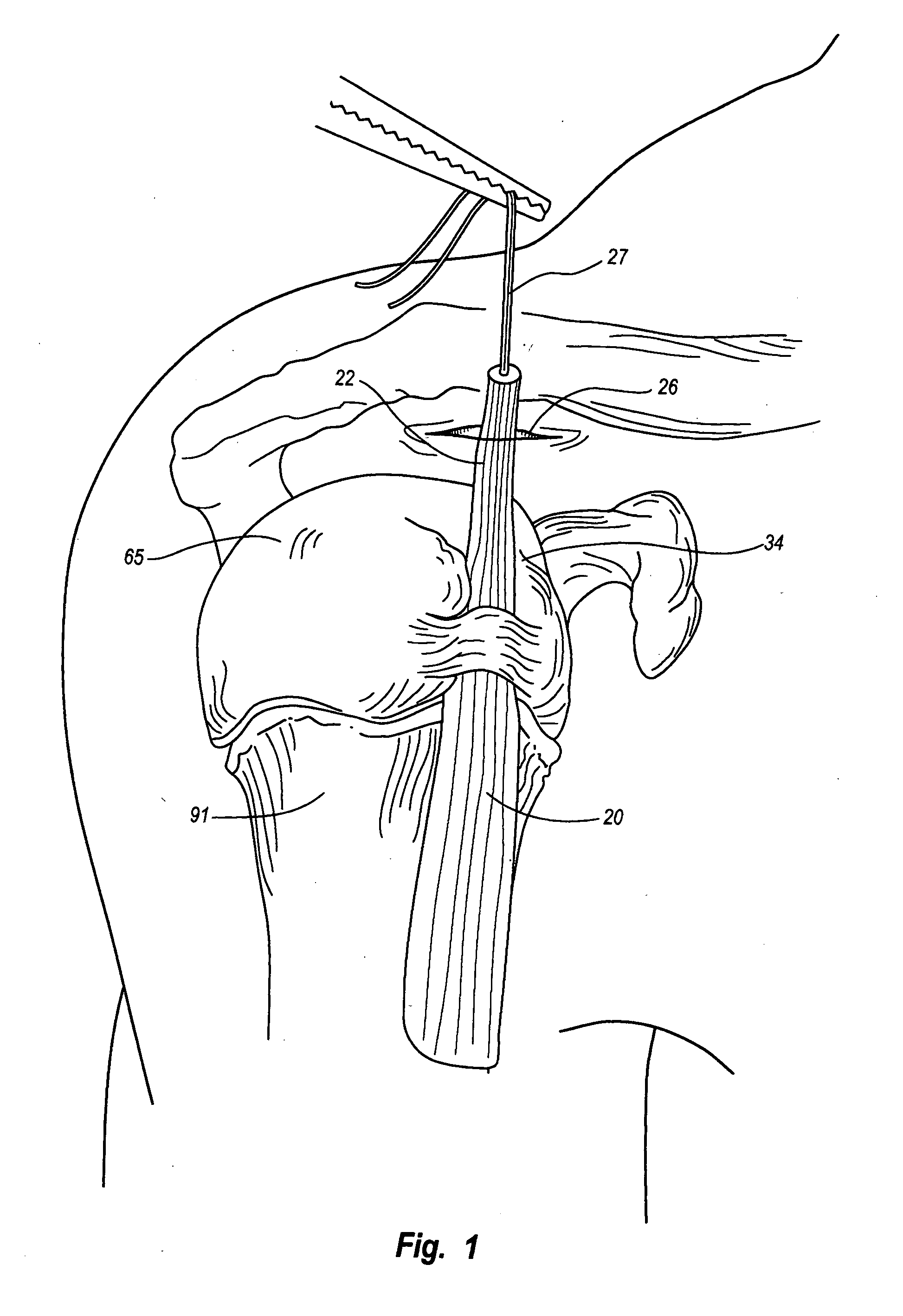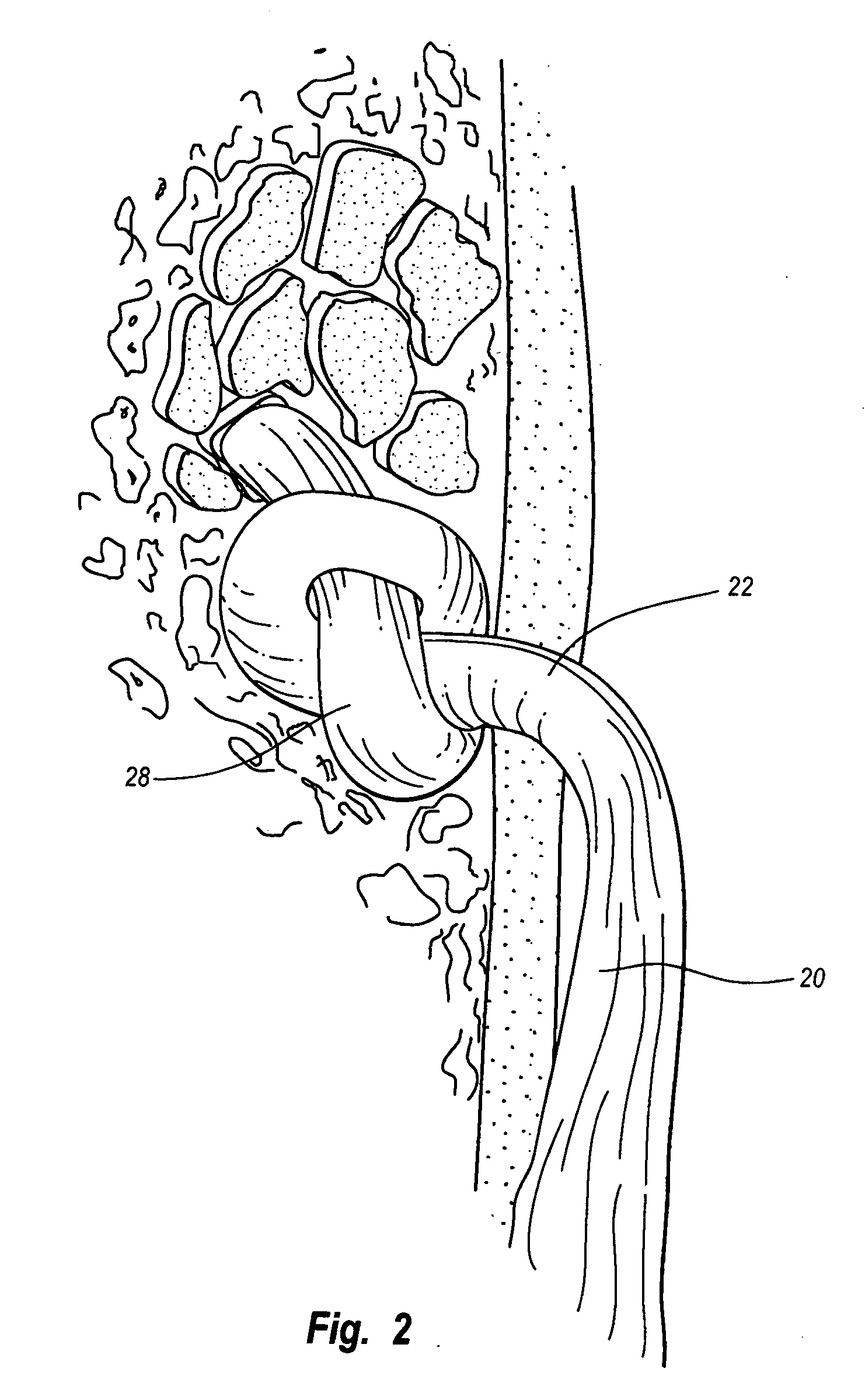Method & apparatus for arthroscopic biceps tenodesis
- Summary
- Abstract
- Description
- Claims
- Application Information
AI Technical Summary
Benefits of technology
Problems solved by technology
Method used
Image
Examples
Embodiment Construction
[0041]Referring Now to the Drawings
[0042]In a preferred embodiment, the process of wedge tenodesis disclosed involves the steps of (1) arthroscopically determining that a repair of a biceps tendon 20 is necessary using conventional arthroscopic procedures, and that a tenodesis is the best procedure for making such repair; (2) arthroscopically separating the head of the biceps tendon from the superior labium; (3) pulling the separated end 22 of the biceps tendon 20 through a portal 26 with a suture 27 and trimming the end 22 of the tendon 20; (4) selecting a wedge to be used from a tied knot wedge 28, FIG. 2, a sutured knot wedge 30, FIG. 3, or a clamp wedge 32, FIG. 9, to be affixed to the separated end 22 of the tendon 20; (5) affixing the selected wedge to the separated end 22 of the tendon 20; and (6) positioning the selected wedge in the bicipital groove 34 of the patient while allowing the biceps tendon 20 to retract within the bicipital groove 34 until held by engagement of th...
PUM
 Login to View More
Login to View More Abstract
Description
Claims
Application Information
 Login to View More
Login to View More - R&D Engineer
- R&D Manager
- IP Professional
- Industry Leading Data Capabilities
- Powerful AI technology
- Patent DNA Extraction
Browse by: Latest US Patents, China's latest patents, Technical Efficacy Thesaurus, Application Domain, Technology Topic, Popular Technical Reports.
© 2024 PatSnap. All rights reserved.Legal|Privacy policy|Modern Slavery Act Transparency Statement|Sitemap|About US| Contact US: help@patsnap.com










